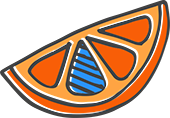With over 150 million active users, odds are that there is someone who needs your service or product on Pinterest right now. But how do you get in front of them? First, you have to have content that is easily sharable on the social media platform + then you need to have easily searchable content. This is easy when you prep images for Pinterest before you click “Publish.”
Sharable content
If you publish a post without an image or video, your content is not going to be easy to share.
Are there ways around it? Of course. But they aren’t going to be doing you any favors. The “pin it” style buttons might grab your logo, your headshot or create a text-based “graphic” for you that is not in your brand colors or about your content at all.
You can get into the nitty-gritty of image proportions if you want to, but if you are looking to save time, focus on having at least 1 good quality image that relates to your content (unless your content is a video post because videos can be pinned as they are.)
Searchable content
Once you’ve created your post Featured Image — maybe with the post title, your URL as a watermark, etc — you have one more thing to do. When you upload the image to your post in WordPress, add alt text.
WTF is alt text?
Alt text is the description that shows up by default when someone goes to pin your article to Pinterest. Could they change it to their own caption? Of course! Do most people care enough to do that? Not even a little bit.
By setting up your image with a well thought out alt text, you set yourself to have folks who pin your content help your post be searchable. Why? Because you used the right keywords + phrases in your alt text that your audience is searching for in Pinterest. This is how you can best prep images for Pinterest.
And because your pinned article now has that caption, your article will pop up in the search results for these new eyes to land on.
A tiny warning
Don’t get too carried away with your alt text crafting. The alt text isn’t only used as the Pinterest caption. It is also used as the description of the image added to your site for anyone using a screen reader.
If a visually impaired user visits your site, they’ll use software that reads the alt text to describe the image. You want the alt text to be helpful for them — as well as someone scouring Pinterest for business advice.
